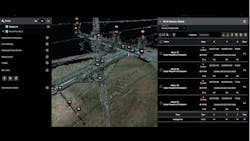Powering Up Resilience: Transforming the Grid with Technical Advancements and Proactive Strategies
The energy industry is at a crossroads, facing significant challenges on all fronts. Expectations are clear: keep the lights on, and if they get knocked out, get them back on fast! The challenge is also clear to those trying to meet those expectations: deliver reliable power at low rates from increasing complex generation sources and rising demand, while minimizing disruptions, especially after storms. Reliability and resiliency are not just buzzwords; they are essential, specific requirements for a robust electric power delivery system.
However, achieving these expectations is complicated by the aging reality of the physical U.S. grid, which was originally designed for a very different supply-and-demand dynamic. Expanding the grid with new transmission lines is a painstakingly slow and expensive process, which often forces the industry to focus on upgrading existing infrastructure where feasible. Society’s reliance on electricity is increasingly vulnerable as severe weather exposes the grid’s fragility. Between 2000 and 2023, nearly 80% of major U.S. power outages were weather-related, with disruptions increasing by 16% in the last decade. Overhead lines, strained by more frequent loading events, create additional challenges for utilities operating within limited operations and maintenance (O&M) budgets. This situation demands creative and proactive strategies to strengthen grid resilience.
A key to building a robust grid lies in extending the lifespan of current assets through preemptive maintenance. This approach allows utilities to improve reliability without waiting for costly overhauls. As electrification accelerates, every outage presents an opportunity to rebuild stronger, leveraging advanced technologies to meet the growing need and prevent future disruptions. This article explores how advanced technology, and forward-thinking strategies can help the energy industry build a modern, resilient grid to meet future demands.
Strengthening Infrastructure Resilience
Experts such as the National Council of Structural Engineers Associations (NCSEA) underscore the need to improve infrastructure resilience. Severe weather events such as Hurricanes Helene and Milton, have exposed vulnerabilities in both aging and modern infrastructure. The NCSEA advocates for updated building codes and more rigorous disaster planning, providing valuable guidance on improving safety and preparedness. These recommendations align closely with utilities' ongoing efforts to enhance grid resilience, highlighting the importance of proactive planning to mitigate storm impacts.
In addition to weather-related threats, infrastructure deterioration poses a substantial risk to power reliability. Traditional reactive maintenance approaches, such as "run to failure," are less effective given the rising regulatory demands for reliability. Instead, proactive approaches—such as end-of-life analysis and predictive maintenance—are essential to preventing equipment failures before they occur and reducing recovery times after storm events. Yet budget constraints further complicate these efforts. A substantial share of overhead maintenance funding (60-75%) is allocated to utility vegetation management, leaving limited resources for physical infrastructure inspection and repairs.
The American Society of Civil Engineers (ASCE) highlighted concerns about the state of U.S. energy infrastructure in its 2021 Report Card, giving the sector a C- grade. The report points out that much of the U.S. energy infrastructure is aging, with a significant portion over 50 years old, and is increasingly vulnerable to extreme weather events. Between 2014 and 2018, severe weather caused the majority of the 638 transmission outages reported. Alarmingly, about 180 million overhead poles have surpassed their 40-50-year lifespan, emphasizing the urgent need for asset life extension and targeted investment. Although funding has increased—rising from $15.6 billion in 2012 to $21.9 billion in 2017 for high-voltage transmission lines, with a 54% rise in distribution investment over the last two decades—the grid still faces a $197 billion shortfall by 2029. An estimated $2 trillion is required to address these challenges, incorporate renewable energy, and improve grid management. To avoid future disruptions, modernizing transmission and distribution systems and prioritizing investments in resilience and asset life extension are crucial. With another comprehensive Report Card due out from the ASCE Committee on America’s Infrastructure in 2025 and with demand outpacing progress, time is of the essence.
Shifting to a Proactive Approach
To address these growing concerns, utilities must transition from reactive to proactive infrastructure management. This shift not only promotes long-term sustainability of the power supply system, but also ensures that communities can recover quickly from disasters, reducing outage durations of critical life-line infrastructure. At the heart of this proactive approach is the need for detailed knowledge of existing infrastructure, allowing utilities to accurately assess the condition of individual lines and structures before issues like corrosion or fatigue compromise structural integrity and performance expectations.
As the NCSEA notes, many structures built to outdated codes are at heightened risk during severe storms, just as older grid components are more vulnerable. The lessons learned from structural engineers studying storm impacts are directly applicable to the energy sector, particularly in updating codes and standards to withstand future hazards. By incorporating proactive maintenance practices and leveraging real-time data, utilities can address compromised assets, improve grid resilience, and ensure rapid recovery when outages do occur.
Reliability vs. Resilience in Grid Modernization
As utilities plan for grid modernization, it’s important to distinguish between reliability and resilience. Reliability focuses on minimizing outages and maintaining a steady power supply, while resilience is about the grid’s ability to recover quickly from major disruptions, especially those caused by extreme weather events. While restoring power quickly is crucial, rebuilding infrastructure to support community recovery and future-proofing the grid by hardening projects is equally important.
Companies with decades of experience are actively addressing these challenges by inspecting and strengthening grid components. Collaborating with engineers, utilities, and consultants, they aim to improve the overall health of overhead power line structures and the resiliency of the grid by reducing failures and designing for targeted recovery times. By combining hands-on experience with cutting-edge technology, these companies can conduct more accurate assessments and provide predictive performance analysis critical for utilities to target their actions and improve both reliability and resilience.
The Role of Technology in Building Resilience
Emerging technologies are transforming how utilities manage and upgrade the grid. Real-time monitoring, advanced sensors, and AI-driven analytics offer early insights into infrastructure vulnerabilities, enabling utilities to allocate resources more efficiently. This not only reduces the risk of outages but also extends the lifespan of critical assets and even identifies available additional capacity in some cases.
Advanced technologies, including AI, are transforming infrastructure assessment by capturing and delivering predictive insights that enable utilities to prioritize maintenance and rehabilitation efforts more efficiently. At industry events, such as the 2024 Transmission & Substation Design & Operational Symposium (TSDOS), innovations such as Exo’s Pole Load Analysis (PLA+) and Looq AI's survey platform solutions highlighted how these advanced systems are setting new standards in asset management, driving collaboration and modernizing grid operations for enhanced resilience and efficiency.
For example, Exo demonstrated how they combine inspection and digital twin modeling utilizing Looq AI’s technology to provide actionable insights that streamline maintenance and decision-making processes, enabling utilities to adopt a more data-driven approach to infrastructure management. The Looq Platform was used to capture precise data through photogrammetry, creating 3D point clouds for accurate line and structural analysis in Powerline Systems, PLS-CADD. By scanning a power line from the ground, the Looq Platform produced datasets that allowed for accurate measurements of cross-arms, wire sag, vegetation clearances, and even woodpecker damage—eliminating dependency on drones. The platform automatically classifies components such as poles, wires, and vegetation, reducing manual effort and improving efficiency, making possible accurate analysis and asset processing speed.
Grid Modernization and Hardening Initiatives
Utilities are already making significant investments in grid hardening to enhance resilience. For example, Entergy Texas has proposed a $335 million plan to reinforce distribution lines, place key segments underground, upgrade substations, and improve vegetation management to reduce storm-related outages. These proactive measures aim to provide more reliable service to communities and minimize the impact of future storms. As a recent example of these efforts, Entergy Texas has been awarded nearly $54 million in federal funding through the Department of Energy’s Grid Resilience and Innovation Partnerships (GRIP) program.
This funding, matched by Entergy Texas' investment, will bolster grid resilience reinforcement of 950 distribution structures, upgrades to 57 transmission structures, and the installation of 14 advanced devices to enable faster responses. These enhancements are expected to reduce outage durations, save an estimated $74 million in storm recovery costs over the next 50 years, and provide more reliable power to approximately 7,000 homes and businesses.
Despite such strides, utilities face regulatory hurdles that underscore the evolving challenges of grid modernization. New standards, such as NERC cold weather requirements, highlight the need for stricter guidelines to prepare infrastructure for extreme weather conditions. However, initiatives like the Port Arthur project demonstrate how targeted investments can not only strengthen essential systems but also deliver broader benefits. By fortifying critical infrastructure, these efforts enhance reliability, reduce recovery times, and support disadvantaged communities, all while creating jobs and reinforcing the Gulf Coast as an economic hub.
Through strategic investments and collaborative funding, utilities are laying the groundwork for a more resilient and sustainable power grid that can better serve both residents and businesses in the face of future challenges.
Strategic Investments for the Future
Now is the time for action. By embracing advanced data collection and analysis tools, utilities can shift from reactive to proactive management, preventing outages and building a more resilient power grid. Innovation and collaboration will be key to securing a reliable energy future.
About the Author
Ken Sharpless
Ken Sharpless, Vice President, Customer Experience, Exo Inc.
Christine Byrne
Christine Byrne, PR and Communications Director, Looq AI

